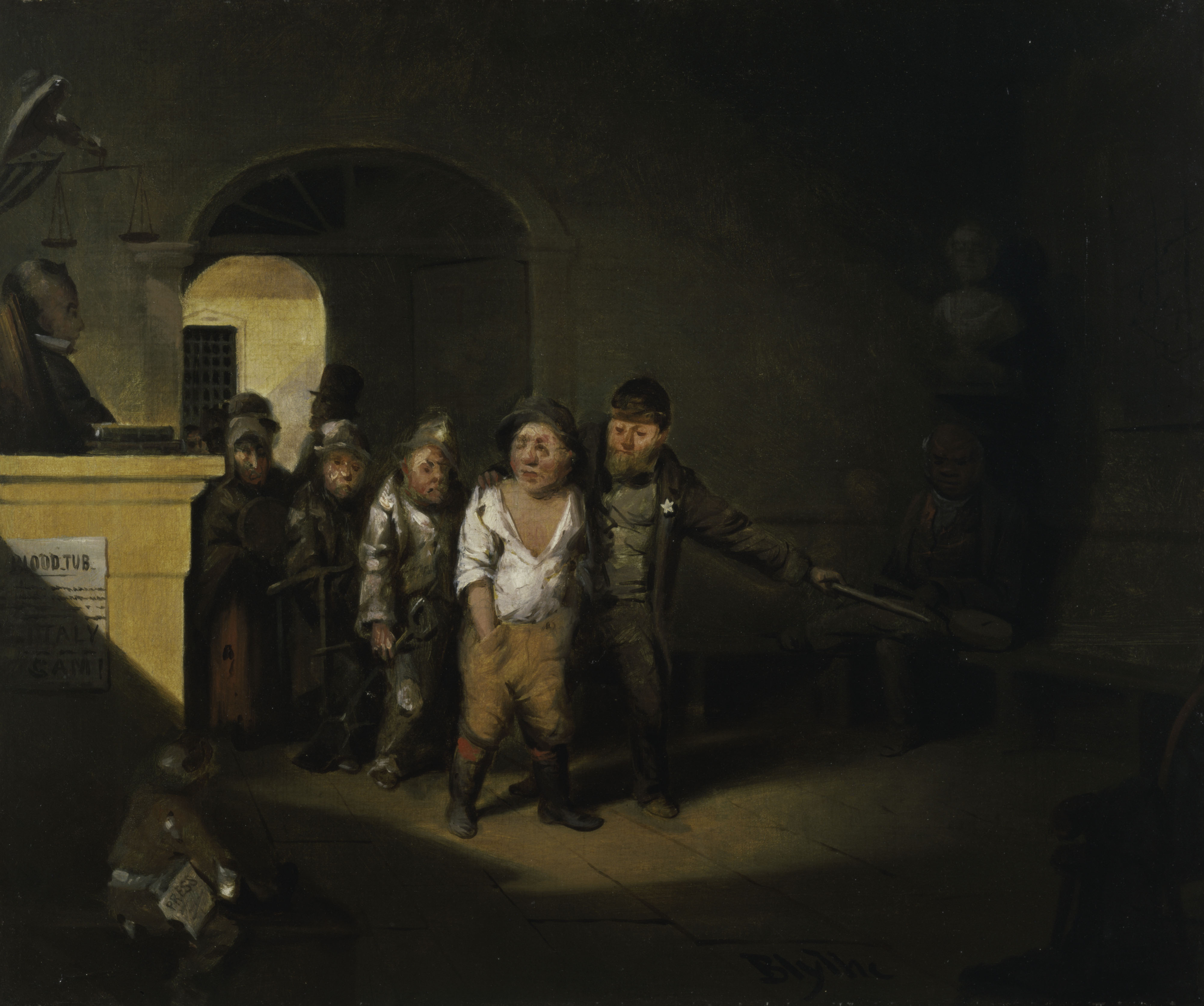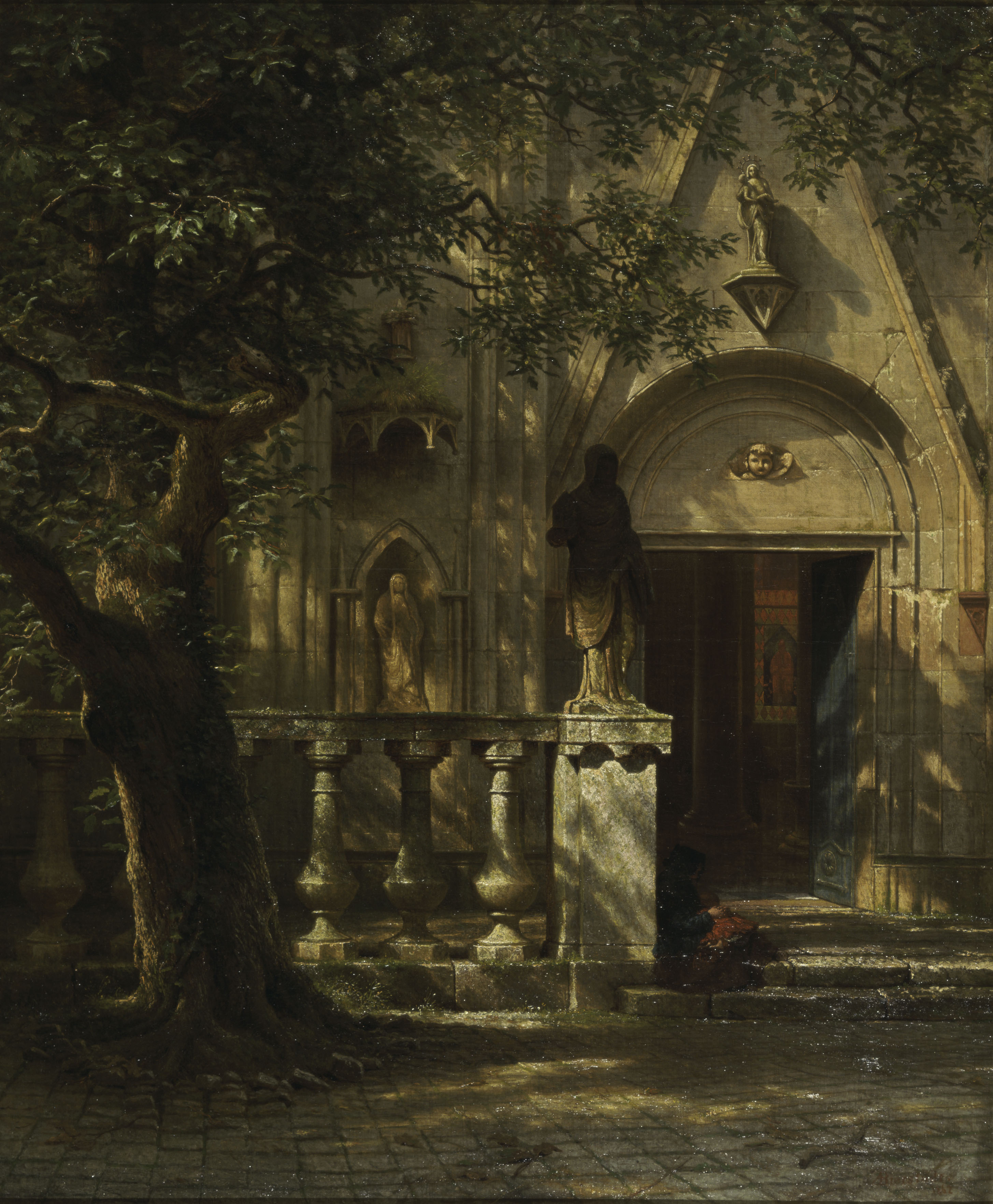The Last Moments of John Brown

Was John Brown a terrorist?

Was John Brown a terrorist?

Is our justice system prejudiced?
Here, a policeman leads a group of suspects into a courtroom, where they are directed to join a man seated on a bench. The “Blood Tubs” (mentioned on the poster attached to the judge’s bench) were members of a Baltimore street gang that supported the American Party, which promoted anti-foreign and anti-Catholic prejudice and sought to restrict immigration. Blythe was a sympathizer, and his caricatures of the working poor may reflect the party’s anti-immigration views.

Is our justice system prejudiced?
Here, a policeman leads a group of suspects into a courtroom, where they are directed to join a man seated on a bench. The “Blood Tubs” (mentioned on the poster attached to the judge’s bench) were members of a Baltimore street gang that supported the American Party, which promoted anti-foreign and anti-Catholic prejudice and sought to restrict immigration. Blythe was a sympathizer, and his caricatures of the working poor may reflect the party’s anti-immigration views.

Was John Brown a terrorist?

What are the benefits and detriments of working independently?
In the 19th century, major rivers served as interstate highways for steamboats carrying passengers and cargo. These vessels were refueled by “woodhawks,” men in small boats loaded with firewood. Bingham’s painting presents these boatmen as mediators between nature and civilization. His idealized depictions of boatmen as free laborers may have reflected his opposition to slavery and its extension into the western states.

What are the benefits and detriments of working independently?
In the 19th century, major rivers served as interstate highways for steamboats carrying passengers and cargo. These vessels were refueled by “woodhawks,” men in small boats loaded with firewood. Bingham’s painting presents these boatmen as mediators between nature and civilization. His idealized depictions of boatmen as free laborers may have reflected his opposition to slavery and its extension into the western states.

Where do you find spirituality?

Where do you find spirituality?

What is the impact of global tourism?
Over time, ancient Rome’s Portico of Octavia (23 BCE) fell into ruin; by the 12th century, it had become a fish market. At the time Bierstadt traveled to Italy in 1857, Rome was defined largely by its historical significance. Yet it remained an important destination for wealthy tourists—such as the American couple carrying a red tourist guidebook here at center right—who made the Grand Tour of Europe to view the roots of western civilization.

What is the impact of global tourism?
Over time, ancient Rome’s Portico of Octavia (23 BCE) fell into ruin; by the 12th century, it had become a fish market. At the time Bierstadt traveled to Italy in 1857, Rome was defined largely by its historical significance. Yet it remained an important destination for wealthy tourists—such as the American couple carrying a red tourist guidebook here at center right—who made the Grand Tour of Europe to view the roots of western civilization.